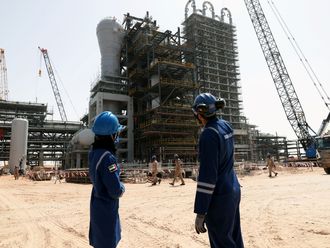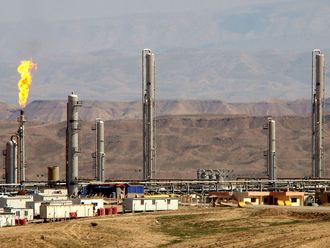Dubai: The evolution of Qatar’s economy from a fast and volatile growth phase driven by significant debt-fuelled public spending to an era of tighter planning and lower public spending, the banking sector loan growth is expected to slow down, according to Morgan Stanley.
“We lower our system loan growth forecasts to 10 per cent year on year compared to 15 per cent previously as we expect reduced levels of public sector borrowing to act as a key headwind to banks’ lending volumes. However, we think the de-facto deadline of the 2022 World Cup will ultimately maintain something of a floor under system credit demand,” said Daniel Cowan, an analyst with a Morgan Stanley.
Based on the lower loan growth forecast analysts have trimmed the net interest margin forecasts for the Qatar banks to reflect expectations of slower growth across the board. “We think lower net public sector credit demand, while helpful for banks’ loan mix; will keep competitive pressure on private sector lending spreads. Generally, though, we still expect a mild upward trend for margins as credit growth accelerates, albeit not as quickly as we had anticipated,” said Stoklosa, Magdalena, a Morgan Stanley analyst.
Analysts expect Qatar’s broad efforts to reduce external vulnerabilities and drive diversified, sustainable growth have important short- and longer-term implications for the banks. Stricter capital requirements are expected slow down loan growth, leaving dividends at risk.
Public loans have already started to decline with a 6 per cent decline year to date (YTD). Total system loans have grown 9 per cent YTD, the slowest in nearly four years while private corporate growth has remained steady for the last five years.
Beneficiaries of public sector borrowings in the past are expected face margin pressures in the context of decline in pubic borrowings. “As the most exposed to public sector borrowing (57 per cent of group loans), we expect Qatar National Bank (QNB) to be most affected, while private sector lenders such as Commercial Bank of Qatar (CBQ) and Doha Bank should continue to benefit from solid corporate credit demand,” said Laura C Sisson, an analyst with Morgan Stanley.
Dividend pressure
Qatar banks’ dividends are expected to come under pressure due to the adoption of Basel III capital rules. Banks adopted Basel III capital rules in the first quarter of 2014. The Qatar Central Bank’s initial minimum capital of 12.5 per cent represents a 250 basis points increase over Basel II requirements. Morgan Stanley analysts expect further capital buffers to push minimum capital to 14 per cent as soon as next year. The fully loaded capital for larger Qatari banks could be 16 per cent by 2019. While earnings growth and return on assets remain healthy, strong risk weighted assets growth will consume considerable capital at banks such as CBQ and Doha Bank.
“We estimate they each need to raise 1.5 billion Qatari riyals (Dh1.5 billion) Tier 1 capital to keep pace with growth. On our forecasts QNB’s organic capital generation will be sufficient. We expect payouts to fall from 2013’s highs at QNB and Doha Bank. There is a risk that cuts will be taken badly by income-hungry domestic investors,” said Cowan.











